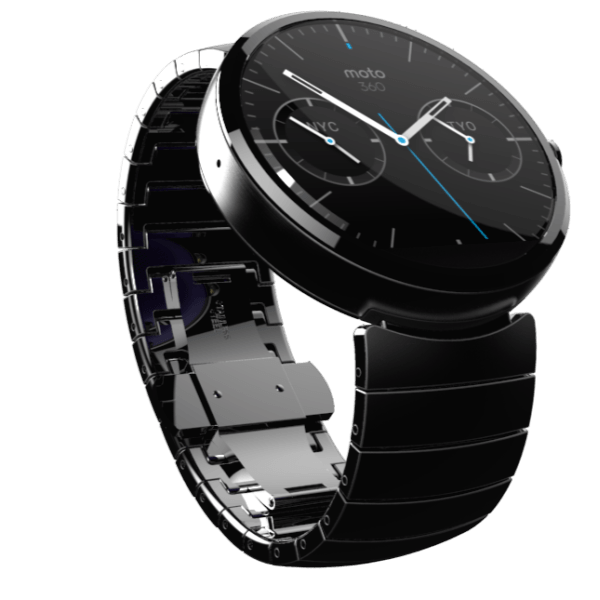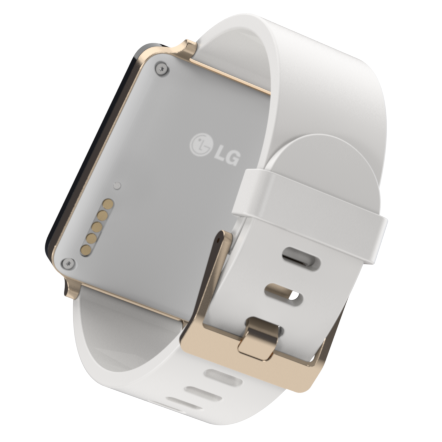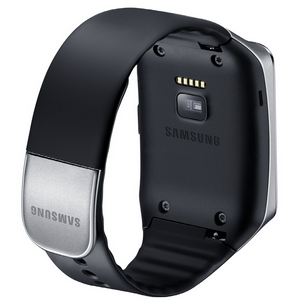Moto 360 vs LG G Watch vs Samsung Gear Live - an early look

Design
Different as they are, the Android Wear watches share some common traits. All three are designed as water and dust-proof, metallic, and accepting of standard 22mm watch straps. The likenesses end here, however.
Finally, the Samsung Gear Live is the best-looking Gear smart-watch to date. Its lines and curves are smoother, and the faceplate no longer has those aggressive metallic screws. This one is sold in black and red.
Display
The Moto 360 distinguishes itself with a circular display that's 46mm, or 1.8-inches wide in diameter. According to the watch's design chief, Jim Wicks, the round form offers the most screen real estate without compromising functionality and comfort. The display's exact resolution and pixel density are not yet known, but our own Maxwell R. had only good things to say about its image quality.

The Moto 360 has a circular display
With the Gear Live, Samsung predictably opted for a Super-AMOLED screen. The screen is 1.63-inches by diagonal, but it has a higher resolution of 320x320 compared to the G Watch. With a pixel density of 278 pixels per inch, you can count on it for a clear picture when it isn't viewed at an unnaturally close distance.
Software and features
All three smart-watches are powered by Google's Android Wear operating system and pair with devices running Android 4.3 and up. Their watch-faces present information such as the time of the day, the user's location, and notifications from the user's phone. Having an integrated microphone means they are able to handle Google Now commands – such as searching the internet, setting appointments and notes, playing music, getting directions, translations, flight times, and all that good stuff. You can get see how the interface looks inside the gallery to the right.
For all we know, the core software experience is the same between the three watches, and there are no differentiating software features to be taken into account at this early stage. However, Samsung already plans to bring its S Health platform and other services (such as ChatON) to the Gear Live, and it's kind of a given that other manufacturers will follow suit.
Hardware
While the Moto 360 is yet to be profiled, LG and Samsung's wearables run on a Qualcomm Snapdragon 400 processor clocked at 1.2GHz, with 512MB RAM, 4GB internal memory, and a bunch of sensors - gyroscope, accelerometer, compass. The Gear Live has another advantage over the others - it embodies a heart-rate sensor.
Battery life

The G Watch's wireless charging pins
While the Moto 360's battery capacity is yet to be announced, the LG G Watch has a 400mAh battery. LG hasn't been too specific about the G Watch's battery life, but it's said to last a full day of usage, 36 hours in an idle state with the screen always on, and even longer with the display switched off. The Samsung Gear Live has to make do with a smaller battery - 300mAh, but Sammy is promising an "all-day battery life" for it.
Price and availability
Price-wise, the Moto 360's is expected to cost a minimum of $249 in the USA and 249 EUR in Europe. Alas, its release date remains elusive. All we know is the Moto 360 won't be coming around until "later this summer".
The Samsung Gear Live is available to order through the Google Play Store for a cheaper $199.99. It will be sold in Samsung retail outlets around the world at a later point.
Conclusion

The Gear Live has a heart-rate sensor
What we're confident about is that the smart-watch is officially a matter of fact. Out of the first crop of Android Wear smart-watches, the Moto 360 has a realistic chance to land some popularity as a luxury watch, while the other two need an injection of personality to overcome their “smartphone companion” feel.

Follow us on Google News












Things that are NOT allowed:
To help keep our community safe and free from spam, we apply temporary limits to newly created accounts: